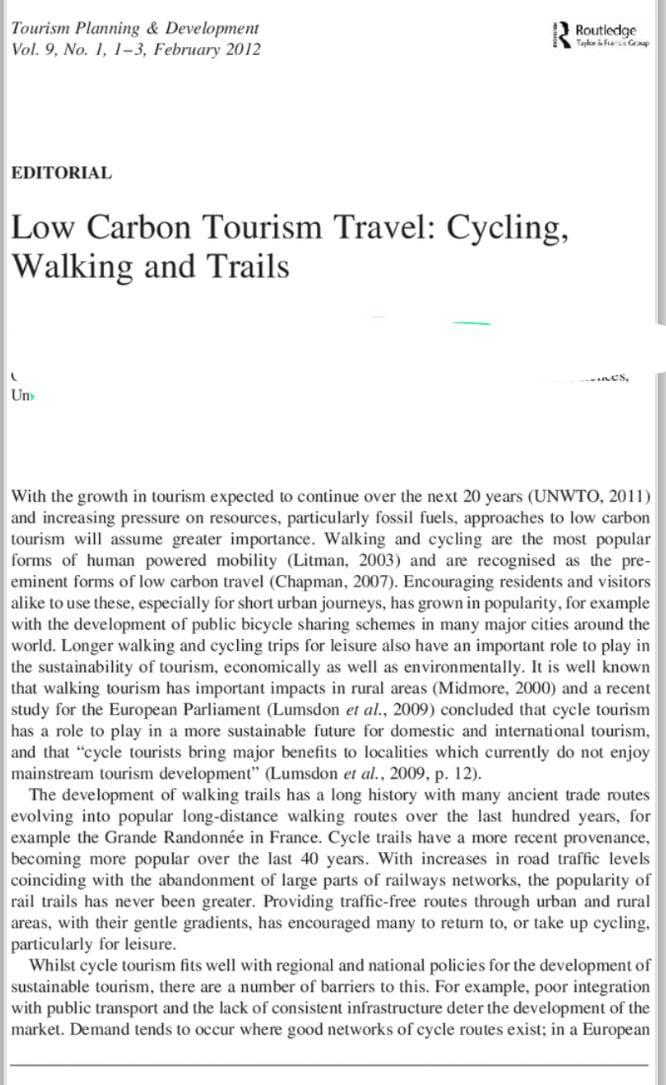Answered step by step
Verified Expert Solution
Question
1 Approved Answer
Required I want to critique this article Tourism Planning & Development Vol. 9, No. 1, 1-3, February 2012 (2) Routledge EDITORIAL Low Carbon Tourism Travel:
Required
I want to critique this article

Tourism Planning \& Development Vol. 9, No. 1, 1-3, February 2012 (2) Routledge EDITORIAL Low Carbon Tourism Travel: Cycling, Walking and Trails With the growth in tourism expected to continue over the next 20 years (UNWTO, 2011) and increasing pressure on resources, particularly fossil fuels, approaches to low carbon tourism will assume greater importance. Walking and cycling are the most popular forms of human powered mobility (Litman, 2003) and are recognised as the preeminent forms of low carbon travel (Chapman, 2007). Encouraging residents and visitors alike to use these, especially for short urban journeys, has grown in popularity, for example with the development of public bicycle sharing schemes in many major cities around the world. Longer walking and cycling trips for leisure also have an important role to play in the sustainability of tourism, economically as well as environmentally. It is well known that walking tourism has important impacts in rural areas (Midmore, 2000) and a recent study for the European Parliament (Lumsdon et al., 2009) concluded that cycle tourism has a role to play in a more sustainable future for domestic and international tourism, and that "cycle tourists bring major benefits to localities which currently do not enjoy mainstream tourism development" (Lumsdon et al., 2009, p. 12). The development of walking trails has a long history with many ancient trade routes evolving into popular long-distance walking routes over the last hundred years, for example the Grande Randonne in France. Cycle trails have a more recent provenance, becoming more popular over the last 40 years. With increases in road traffic levels coinciding with the abandonment of large parts of railways networks, the popularity of rail trails has never been greater. Providing traffic-free routes through urban and rural areas, with their gentle gradients, has encouraged many to return to, or take up cycling, particularly for leisure. Whilst cycle tourism fits well with regional and national policies for the development of sustainable tourism, there are a number of barriers to this. For example, poor integration with public transport and the lack of consistent infrastructure deter the development of the market. Demand tends to occur where good networks of cycle routes exist; in a European
Step by Step Solution
There are 3 Steps involved in it
Step: 1

Get Instant Access to Expert-Tailored Solutions
See step-by-step solutions with expert insights and AI powered tools for academic success
Step: 2

Step: 3

Ace Your Homework with AI
Get the answers you need in no time with our AI-driven, step-by-step assistance
Get Started


